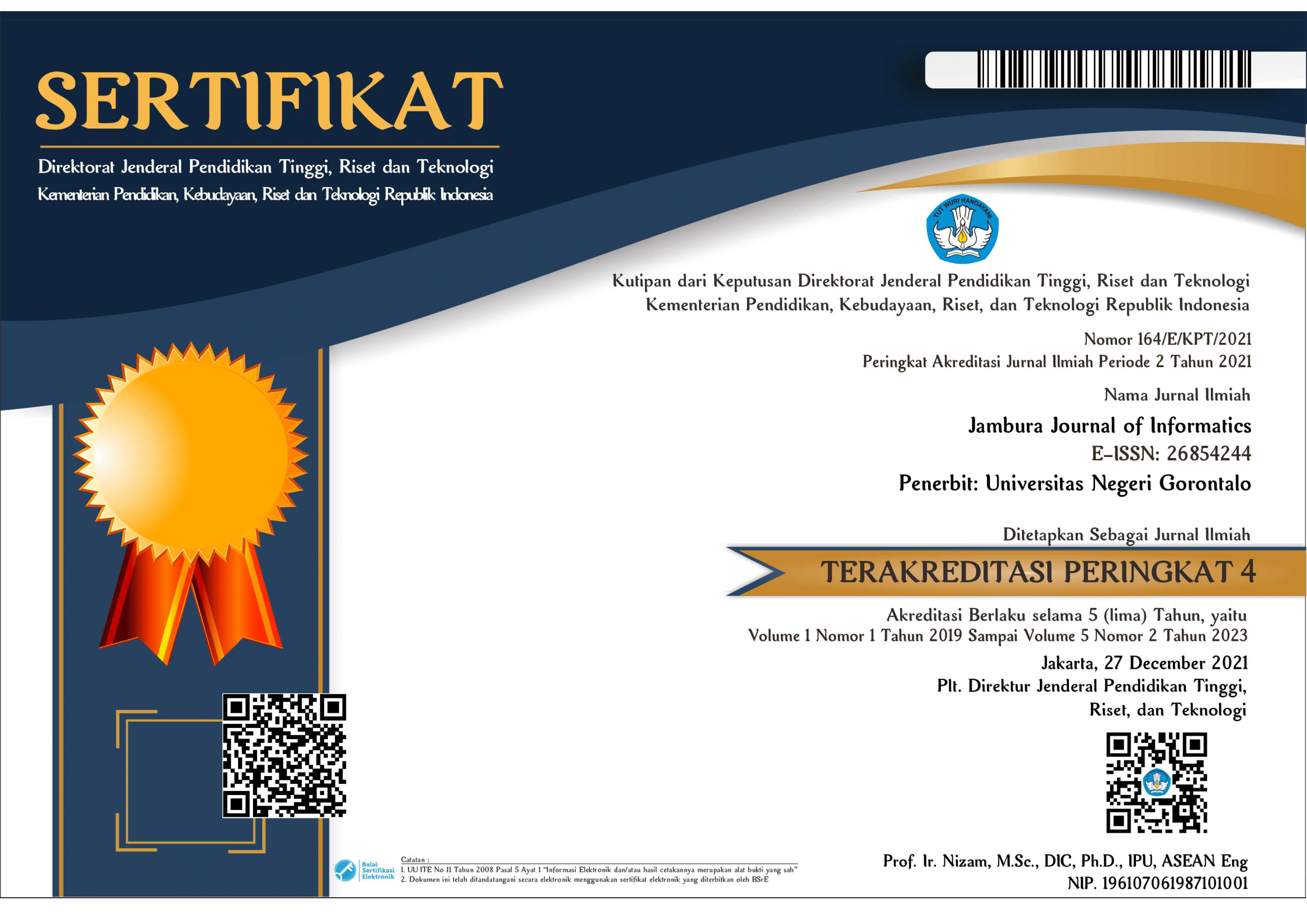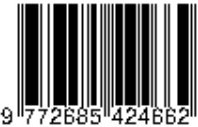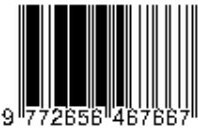Penerapan Metode Simple Additive Weighting pada Sistem Rekrutmen Karyawan Berbasis Web
Abstract
Berkembangnya ilmu pengetahuan dan teknologi di bidang sistem informasi mengakibatkan peningkatan kinerja organisasi dalam mengelola informasinya. Hal ini juga berlaku pada sistem rekrutmen karyawan yang dapat menjadi solusi dalam proses rekrutmen karyawan dalam sebuah organisasi, dimana organisasi dapat memilih sendiri karyawan yang tepat untuk organisasinya. Sistem rekrutmen karyawan berbasis web digunakan untuk mendukung tahap pengambilan keputusan dengan mengidentifikasi masalah, memilih data yang relevan dengan metode Simple Additive Weighting (SAW). Tujuan penelitian ini adalah merancang sistem rekrutmen karyawan dengan menggunakan metode SAW berbasis web. Metode yang digunakan adalah metode pengembangan sistem model prototype dengan tahapan komunikasi, perencanaan secara cepat, pemodelan perancangan secara cepat, konstruksi dan penyerahan sistem. Adapun proses pengumpulan data dilakukan dengan observasi, wawancara dan angket. Hasil penelitian ini adalah sistem rekrutmen karyawan berbasis web dimana sistem dapat menginput data lowongan pekerjaan, menginput data pelamar, membuat jadwal interview, menampilkan informasi data penilaian, serta menampilkan laporan hasil penilaian. Adapun hasil evaluasi sistem menggunakan System Usability Scale (SUS) didapat nilai sebesar 80 yang menunjukkan grade rangking of SUS scores pada tingkat penerimaan pengguna dalam kategori acceptable dan grade skala kategori B, yang artinya sistem memiliki kualitas yang baik dan mudah digunakan oleh pengguna.
Keywords
Full Text:
PDF (BAHASA INDONESIA)References
Abbas, S. I., Shah, M. H., & Othman, Y.H. (2021). Critical review of recruitment and selection methods: understanding the current practices. Annals of Contemporary Developments in Management & HR (ACDMHR), 3(3), 46-51. doi: 10.33166/ACDMHR.2021.03.005
Abbasi, S. G., Tahir, M. S., Abbas, M., & Shabbir, M. S. (2020). Examining the relationship between recruitment & selection practices and business growth: An exploratory study. Journal of Public Affairs, 22(2), 1-5. doi:10.1002/pa.2438
Armstrong, M. (2014). Armstrong's handbook of human resource management practice. 13th edition. London, UK: KoganPage.
Bakti, A. M. (2021). Aplikasi tes penerimaan pegawai menggunakan metode SAW (Simple Additive Weighting) pada Universitas PGRI Palembang. Jurnal Informatika, 7(2), 1-9.
Bangor, A., Kortum, P., & Miller, J. (2009). Determining what individual SUS scores mean: Adding an adjective rating scale. Journal of usability studies, 4(3), 114-123.
D'Silva, C. (2020). A study on increase in e-recruitment and selection process. International Journal of Research in Engineering, Science and Management, 3(8), 205-213.
Enis, F. (2018). Human resource management and its importance in everyday business administration. In 4th International Conference Economic Sciences. Functioning of economic systems in the global world, 20-25.
Geetha, R., & Bhanu, S. R. D. (2018). Recruitment through artificial intelligence: a conceptual study. International Journal of Mechanical Engineering and Technology, 9(7), 63-70.
Gamage, A. S. (2014). Recruitment and selection practices in manufacturing SMEs in Japan: An analysis of the link with business performance. Ruhuna Journal of Management and Finance, 1(1), 37-52.
Malik, M. S & Mujtaba, A. U. M. (2018). Impact of e-recruitment on effctiveness of HR department in private sector of Pakistan. International Journal of Human Resource Studies, 8(2), 80-94. doi:10.5296/ijhrs.v8i2.12869
Mindia, P. M., & Hoque, M. K. (2018). Effects of e-recruitment and internet on recruitment process: An empirical. International Journal of Scientific Research and Management (IJSRM), 6(1), 01-06. doi:10.18535/ijsrm/v6i1.em01
Pibriana, D. (2020). Implementation of simple additive weighting (SAW) method in employee recruitment decision making at PT. ABC. Techno.COM, 19(1), 45-55. doi:10.33633/tc.v19i1.2771
Ptel, M. (2020). Social posting in Covid-19 recruiting era-milestone HR strategy augmenting social media recruitment. Dogo Rangsang Research Journal, 10(6), 82-89
Pressman, R.S., & Maxim, B. (2019). Software engineering: a practitioner's approach. 9th Edition. New York: McGraw-Hill.
Rizky, A.A., & Ramdhani, I. (2019). Perancangan sistem informasi perekrutan karyawan berbasis web menggunakan PHP dan MySQL di PT. Ria Indah Mandiri. Jurnal Manajemen Informatika, 9(1), 49-57.
Setyawan, A., F. Y. Arini., & I. Akhlis. (2017). Comparative analysis of simple additive weighting method and weighted product method to new employee recruitment decision support system (DSS) at PT. Warta Media Nusantara. Sci. J. Informatics, 4(1), 34-42. doi: 10.15294/sji.v4i1.8458
Setiawan, N., Nasution, M.D.T.P., Rossanty, Y., Tambunan, A. R.S., & Girsang, M. (2018). Simple additive weighting as decision support system for determining employees salary. Int. J. Eng. Technol, 7(2), 309-313.
Sudiarjo, A., & Ruuhwan. (2020). Application of the simple additive weigthing method in the selection of housing in the city of Tasikmalaya. Journal of Physics: Conference Series, 1477(2020), 1-6. doi:10.1088/1742-6596/1477/3/032025.
Stephen, E. G., Cinjel, D.N., Apikins, M. W. & Samuel, I.A. (2019). Recruitment, selection and placement of human resource in international civil service commission. International Journal of Sciences: Basic and Applied Research (IJSBAR), 48(4), 188-200.
Taherdoost, H. (2023). Analysis of simple additive weighting method (SAW) as a multi attribute decision-making technique: a step-by-step guide. Journal of Management Science & Engineering Research. 6(1), 21-24. doi: 10.30564/jmser.v6i1.5400
DOI: https://doi.org/10.37905/jji.v5i1.19312
Refbacks
- There are currently no refbacks.
JJIhas been indexed by:

|

|

|

|

|

|

|

|

|
| Editorial Office |
|
Engineering Faculty Building, 1st Floor Jl. Prof. Dr. Ing. B. J. Habibie, Bone Bolango, Gorontalo, 96119, Indonesia. Whatsapp: +6281314270499 Email: [email protected] |

|
|
|












